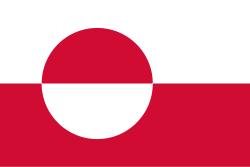Greenland's Melting Ice Reveals Rare Earth Riches Amid Geopolitical Tensions
 Greenland
GreenlandA recent examination of Denmark’s history with Greenland has revealed disturbing accounts of past injustices faced by the island's Inuit population. In the 1950s, around 20 Inuit children, aged five to nine, were taken from their families and sent to Denmark for re-education, with many returning unable to communicate with their parents. Denmark's Prime Minister Mette Frederiksen publicly apologized for these actions in 2022.
Additionally, from the 1960s to 1970s, thousands of Inuit women were subjected to involuntary intrauterine device (IUD) fittings by Danish doctors without consent, aimed at controlling population growth, a situation now known as the "Spiral Case." Ongoing investigations are being carried out to address these historical grievances.
Greenland's complex relationship with Denmark dates back to when it was a Danish colony, transitioning to a county in 1953 and gaining autonomy in 1979. Today, many Greenlanders express desires for independence, although they are hesitant due to Denmark's substantial annual financial aid of approximately €600 million, which supports critical social services.
Recent statements from Donald Trump regarding U.S. control over Greenland have sparked fears among Greenlanders regarding potential loss of autonomy, while also raising discussions about future independence from Denmark. The shared history remains fraught with challenges, with many Inuit still feeling the effects of past injustices.
 Greenland
Greenland Greenland
Greenland Greenland
Greenland